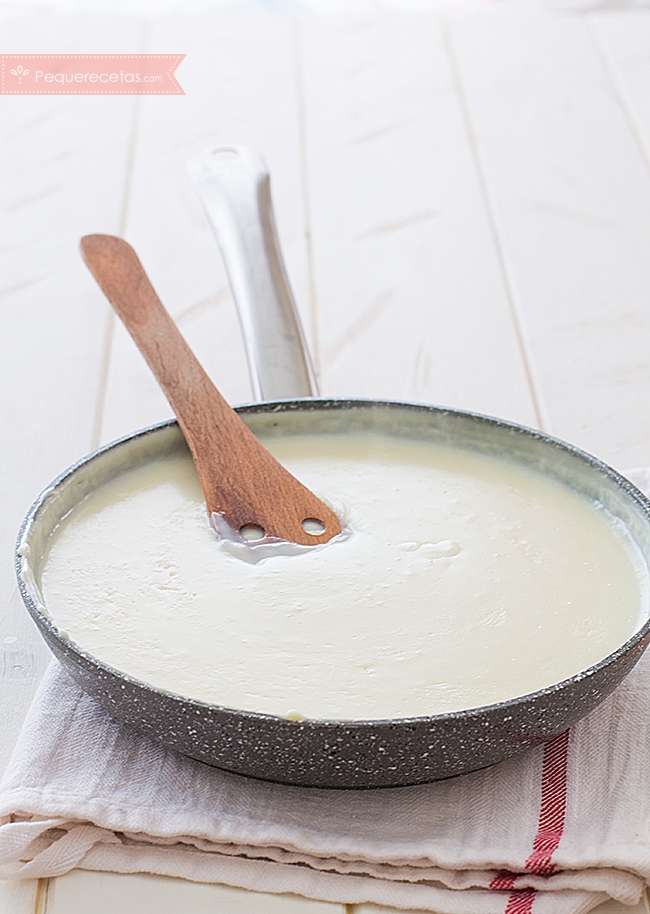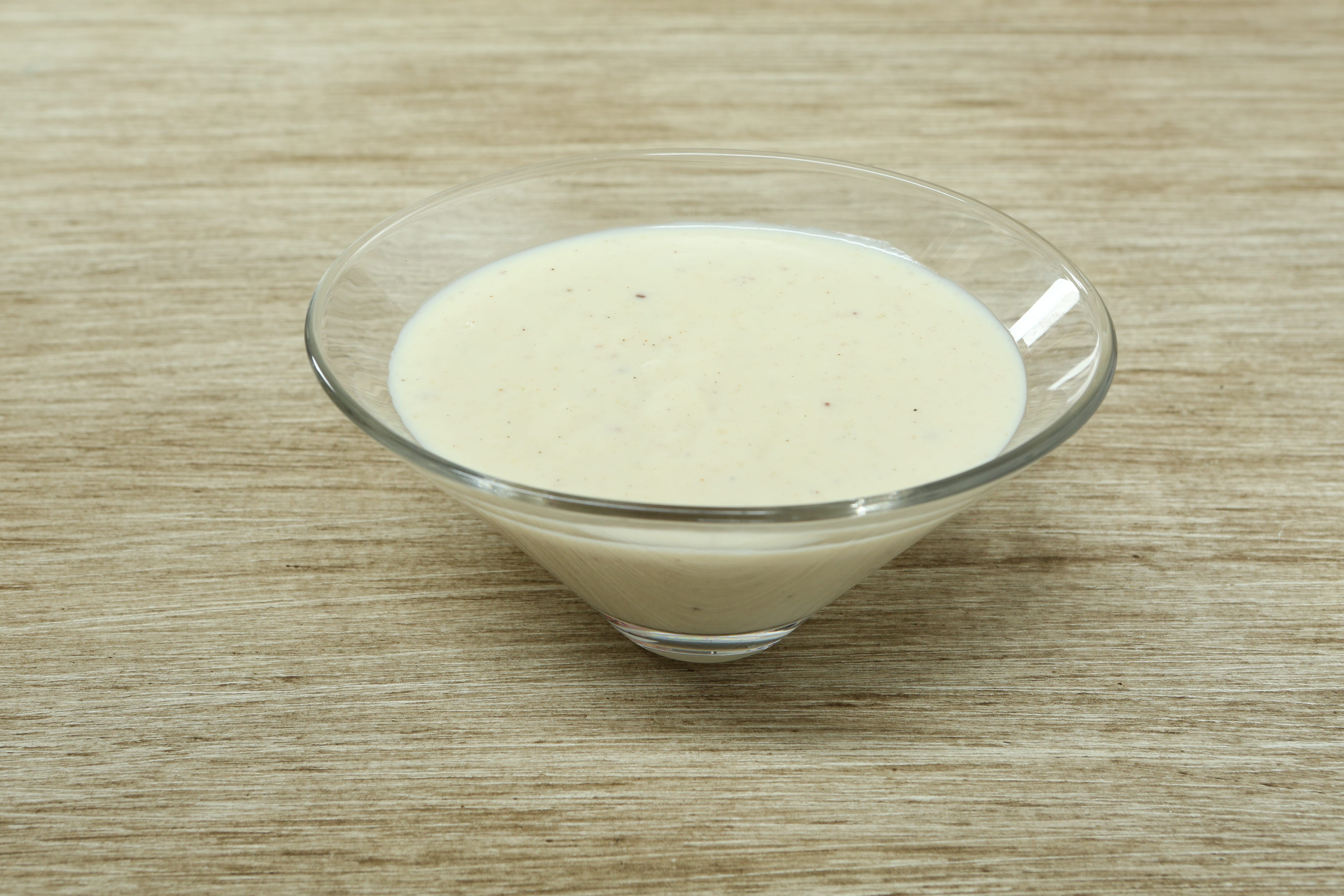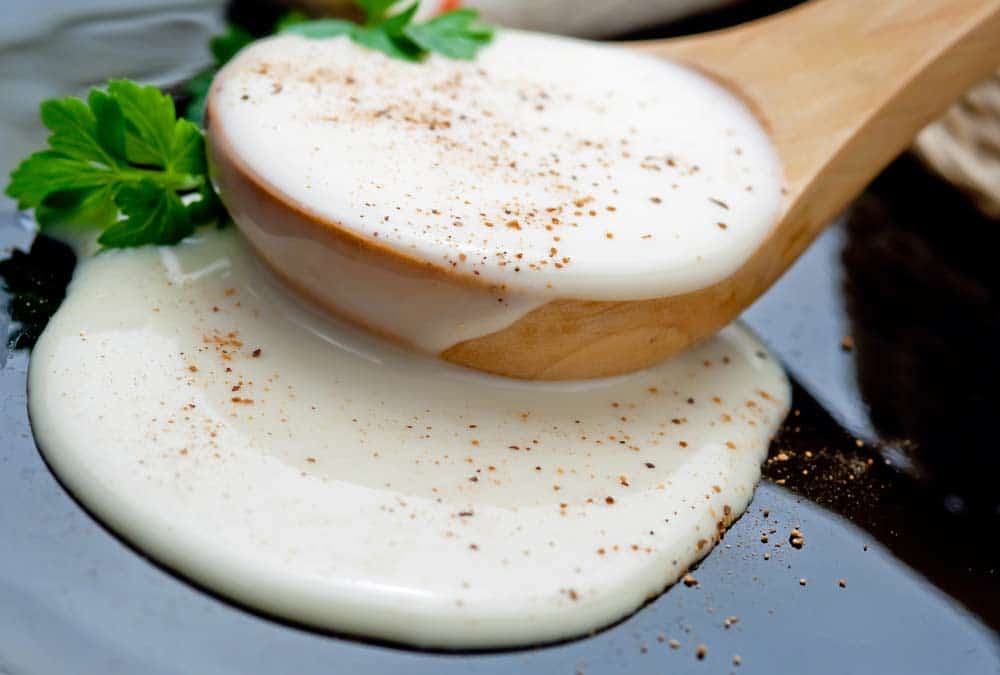How To Make Bechamel Sauce: Easy Recipe & Tips
Is there a single sauce that can elevate a simple dish to gourmet status, a culinary chameleon that adapts to countless cuisines, and a secret weapon for both novice and seasoned cooks? The answer, unequivocally, is yes: it's the bchamel sauce, a cornerstone of classic cooking that's surprisingly simple to master.
Often hailed as one of the "mother sauces" of the culinary world, bchamel provides the creamy, comforting base for everything from classic lasagna and croque monsieur to decadent gratins and elegant souffls. Its versatility knows no bounds, allowing for endless flavor variations and applications. Whether you're a seasoned chef or a home cook just starting your culinary journey, learning to make a perfect bchamel is an investment in your cooking skills.
Here's a quick breakdown of why this seemingly humble sauce holds such a prestigious place in the pantheon of culinary creations. The origins of bchamel are often attributed to the French and Italian kitchens. In any good cookbook you will always see the Mother Sauces, that have formed the foundation of many recipes and techniques.
One of the joys of bchamel is its adaptability. While the classic recipe is a staple, variations abound to suit dietary needs and flavor preferences. For those seeking a gluten-free alternative, recipes using cornstarch or other starches instead of flour are readily available. Health-conscious cooks can experiment with low-fat versions, using skim milk and reduced amounts of butter. The possibilities are truly endless.
The beauty of bchamel lies not only in its deliciousness but also in its simplicity. The classic recipe calls for just a handful of ingredients: butter, flour, milk, and a touch of seasoning. With a little practice, anyone can achieve a smooth, velvety sauce that transforms ordinary dishes into extraordinary culinary experiences.
Now let's delve deeper into the world of this culinary wonder.
Bchamel
The bchamel sauce is more than just a sauce; it's a foundational element in many culinary traditions. Its smooth, creamy texture and subtle flavor profile make it an ideal base for various dishes, offering a blank canvas for chefs and home cooks to create a wide array of culinary delights. From the rich flavors of a classic lasagna to the comforting warmth of a cheesy gratin, bchamel is the ingredient that ties it all together.
The sauce is traditionally made by whisking together butter and flour to form a roux, which then serves as a thickening agent for the milk that is gradually incorporated. This simple process, when executed with care and precision, results in a sauce that is both versatile and delicious. Once the roux is ready, a bay leaf adds a fragrant depth to the sauce. This gentle infusion helps to create a delicate flavor profile that enhances the overall dish.
The bchamel is used in a multitude of dishes, such as lasagna with meat, tuna cannelloni, Greek moussaka, or even with gratinated scallops. In addition, bchamel sauce is the base for preparing the dough for croquettes. The result is a smooth and delicious sauce that you'll want to add to all kinds of dishes and use as an alternative to Alfredo sauce.
Bchamel also provides a fantastic base for croquettes, a popular appetizer that combines the creamy sauce with various ingredients like ham, cheese, or vegetables, breaded and fried to golden perfection. It also lends itself well to more inventive dishes, acting as a creamy binder in vegetarian dishes, adding texture and body to soups.
The bchamel sauce is also a great choice for dishes that need a bit more indulgence. One of the great things about bchamel is its simple recipe, which makes it easy to customize. This includes various cheeses, such as roquefort or goat cheese, can be added to make a delicious cheese bchamel. It is a sauce that helps create delicious dishes, adding some French mustard or including capers and anchovies in pieces.
From the simple elegance of a cheese sauce for vegetables to the luxurious richness of a lobster thermidor, bchamel's versatility is a testament to its enduring popularity. The sauce is also often used as a base for creamy vegetable dishes, lending a touch of elegance to a humble bowl of broccoli.
The Classic Bchamel Recipe
The recipe of the bchamel sauce is easy to create as it is made with simple ingredients. Now we'll delve into the classic recipe for bchamel, guiding you step-by-step to culinary perfection.
Ingredients:
- 1 litre of whole milk.
- 60 grams of butter.
- 60 grams of all-purpose flour.
- A small bay leaf.
- Salt and a pinch of nutmeg to taste.
Instructions:
- Prepare the Aromatics: Begin by gently warming the milk in a saucepan with a bay leaf. This infuses the milk with a subtle aroma.
- Melt the Butter: In a separate, heavy-bottomed saucepan, melt the butter over medium heat. The butter should be melted completely.
- Make the Roux: Whisk in the flour, cooking for 2-3 minutes to eliminate any raw flour taste. This mixture, known as a roux, is the foundation of the sauce.
- Add the Milk: Gradually whisk in the warm milk, a little at a time, ensuring each addition is fully incorporated before adding more. Continue whisking constantly to prevent lumps.
- Simmer and Thicken: Bring the mixture to a gentle simmer, continuing to whisk to prevent scorching. The sauce will begin to thicken; continue cooking for about 5-7 minutes.
- Season and Strain: Season with salt and nutmeg, tasting and adjusting as needed. Remove the bay leaf and strain the sauce through a fine-mesh sieve for a perfectly smooth texture.
By following these steps with care and attention, you will achieve a velvety, creamy sauce that forms the perfect foundation for a vast array of dishes.
Bchamel Variations
Once you've mastered the classic bchamel, the adventure truly begins. This sauce is a springboard for creativity, allowing you to tailor it to your specific tastes and the dishes you're creating. From subtle flavor enhancements to bold, inventive combinations, the possibilities are endless.
Cheese Bchamel: This is perhaps the most popular variation, transforming the sauce into a rich, cheesy delight. Simply add grated cheese, such as cheddar, Gruyre, or Parmesan, to the finished sauce, stirring until melted and smooth. The type of cheese you use will dictate the final flavor profile, from sharp and tangy to nutty and complex. This is an excellent addition to gratins, pasta bakes, and vegetable dishes.
Mushroom Bchamel: For a savory and earthy twist, saut finely chopped mushrooms in butter before adding the flour. This infuses the roux with mushroom flavor. You can also add sauted mushrooms directly to the finished sauce for a chunky texture and more pronounced mushroom taste.
Mustard Bchamel: Add a touch of Dijon or whole-grain mustard to the sauce for a tangy and slightly spicy kick. This variation is excellent with ham, fish, and vegetables.
Seafood Bchamel: Enhance the flavor with fish stock instead of milk. Fold in cooked seafood, such as shrimp, crab, or lobster, for a luxurious and satisfying dish.
The beauty of bchamel is that its an open canvas. Feel free to experiment with different herbs, spices, and flavor combinations to create a sauce that perfectly complements your culinary creations.
Troubleshooting Common Bchamel Mistakes
Even with the simplest of recipes, there's always a chance of a mishap. Fear not! Most bchamel problems can be easily fixed with a bit of knowledge and a steady hand. Here are some common mistakes and how to avoid them:
Lumpy Sauce: This is the most common issue. Lumps form when the flour isn't properly incorporated into the butter (roux) or when the milk is added too quickly.
Prevention: Make sure your roux is smooth before adding the milk. Add the milk gradually, whisking constantly to prevent lumps from forming. If lumps do appear, strain the sauce through a fine-mesh sieve.
Thin Sauce: A thin sauce means the roux wasn't cooked long enough or there wasn't enough flour.
Prevention: Cook the roux for 2-3 minutes to ensure the flour is cooked through. Ensure you have the correct ratio of flour to butter. If the sauce is too thin, you can gently simmer it for a few minutes to allow it to thicken, or create a slurry of a little flour and cold milk and add it to the sauce.
Burnt Taste: This is usually due to cooking the roux over too high heat or not stirring the sauce constantly.
Prevention: Use medium heat and stir the sauce frequently, especially when the milk is added.
Gritty Texture: This can happen if the sauce isn't strained or if the flour isn't fully incorporated.
Prevention: Always strain the sauce through a fine-mesh sieve to remove any lumps. Make sure the flour is thoroughly mixed into the melted butter to prevent a gritty texture.
By understanding these common pitfalls and how to avoid them, you can confidently create a perfect bchamel every time.
Beyond the Basics
Now that youve mastered the technique and understand the variations, its time to explore the wide world of dishes that benefit from this versatile sauce. Bchamel is more than just a component; it's a transformative agent that adds creaminess, flavor, and depth to a variety of dishes.
Lasagna and Gratins: This is perhaps its most famous role, acting as the creamy layer between pasta sheets, meat sauces, and cheese in lasagna. In gratins, it coats vegetables or potatoes, ensuring theyre tender and flavorful, and creates a beautifully browned top.
Croque Monsieur/Madame: This classic French sandwich gets its richness and flavor from bchamel. The sauce is spread on the bread, topped with ham and cheese (and a fried egg for the "Madame"), and then broiled until golden.
Vegetable Dishes: Elevate simple steamed or roasted vegetables by coating them in bchamel, or cheese bchamel, for a comforting and flavorful side dish. Cauliflower, broccoli, and asparagus all shine with this sauce.
Pasta Dishes: Bchamel can be a lighter alternative to a heavy cream sauce. Toss cooked pasta with bchamel and add your favorite ingredients, such as vegetables, meats, or seafood.
As a Base for Soups: A spoonful of bchamel can transform a thin soup into a creamy and satisfying meal.
With a little imagination, bchamel can become an indispensable part of your culinary repertoire.
The Origins of Bchamel
The bchamel sauce has a rich history, with its precise origins somewhat shrouded in culinary lore. While the sauce is known in culinary world, it's origins are often linked to French and Italian kitchens.
The sauce's fame can be traced back to the French kitchens of the 17th century. Historians credit the Marquis de Bchamel, the financier and steward of King Louis XIV, with popularizing it.
It is one of the sauces that can be traced back to France, and now it is present in restaurants all over the world. The versatility of the sauce means that it can be paired with different foods and even be a standalone dish. It is a sauce that is a testament to the power of simplicity and adaptability in cooking.
This creamy, versatile sauce is a culinary cornerstone, perfect for enhancing dishes. It's a testament to the power of simplicity and adaptability in cooking.
By adding different ingredients it becomes a cheese sauce or a Mornay sauce. It is a sauce that has stood the test of time and is still a favorite of many chefs.
Tips for Perfecting Your Bchamel
To ensure your bchamel is a success, here are some valuable tips from experienced cooks:
Use the Right Ingredients: High-quality butter and whole milk will significantly impact the flavor and texture of your sauce.
Control the Heat: Maintain a moderate heat throughout the cooking process to prevent scorching and ensure a smooth consistency.
Whisk Vigorously: Continuous whisking is essential, especially when adding the milk, to prevent lumps and ensure the sauce is perfectly emulsified.
Season Generously: Don't be shy with the salt and nutmeg. These seasonings enhance the flavor of the sauce.
Strain for Perfection: Even if your sauce looks smooth, straining it through a fine-mesh sieve will remove any tiny lumps and create a truly luxurious texture.
Taste and Adjust: Always taste your sauce and adjust the seasoning to your liking.
With a bit of practice and attention to detail, you'll be creating bchamel that will rival the best chefs.
Here is table of information about bechamel sauce :
| Aspect | Details |
|---|---|
| Origin | French, though the exact origin is debated. |
| Key Ingredients | Butter, flour, milk, salt, nutmeg (optional). |
| Basic Technique | Make a roux (butter and flour), then whisk in milk. |
| Texture | Smooth, creamy, and velvety. |
| Flavor Profile | Mild, slightly milky, with the potential for added flavors. |
| Versatility | Foundation for numerous dishes, adaptable to various flavors. |
| Common Uses | Lasagna, gratins, croque monsieur/madame, vegetable dishes, pasta dishes, soup bases. |
| Variations | Cheese bchamel, mushroom bchamel, mustard bchamel, seafood bchamel. |
| Common Mistakes | Lumps, thinness, burnt taste, gritty texture. |
| Tips | Use quality ingredients, control the heat, whisk constantly, season generously, and strain. |


